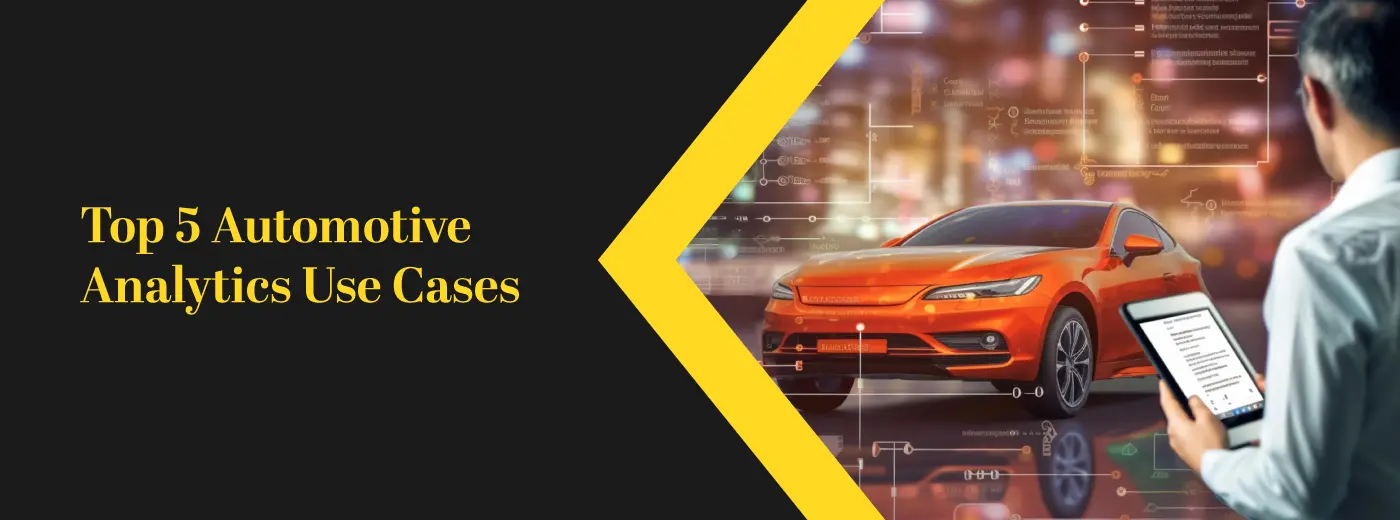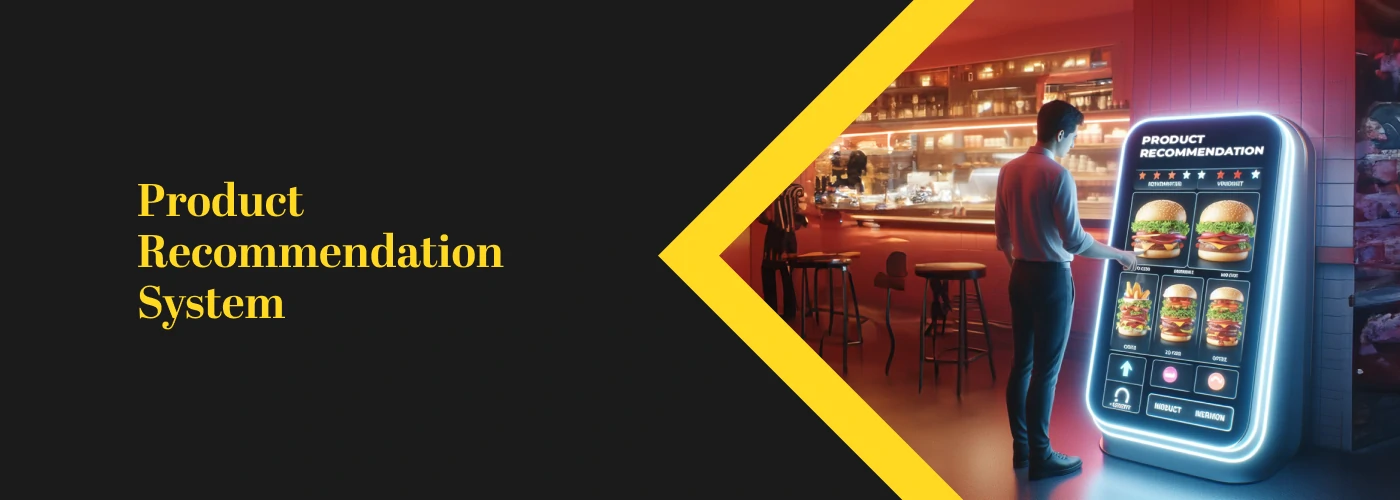Last Updated : 01-March-2024
Editor’s note: The automotive industry is undergoing a transformative shift, fueled by the power of data and analytics. Understand how the factors like electrification, autonomous driving, and connected cars are affecting the landscape and also know their implications with the key analytics and artificial intelligence use cases.
Remember the iconic flying cars of "Blade Runner," zipping through the skies of a 2019 dystopian Los Angeles? Though in reality we’ve not seen cars flying over LA – the advancement in automotive technology has created smarter, safer, and more sustainable ways to drive.
Gartner estimates that by 2032, the unit production share of vehicles with internal combustion engines will decrease to less than 60% of all vehicles produced.
With the advancement in tech improving the experience of autonomous vehicles (AV) & Electric vehicles (EV) with multi-sensor, AI enabled, over-the-air updates and more. Especially with Generative AI, the use cases in automotive industry are endless ranging from virtual & voice assistant to applications in material and generative design. Companies can balance the art of design, safety, and comfort like Toyota who are working on redesigning seat frames.
Understand the benefits, AI penetration, and how to start a gradual transformation with this short guide
The increasing relevance of data for automotive industry
But what are the implications of such changes like multi-sensor integration? Every piece of information is being tracked with all the sensors and high-tech devices placed around the shop floor and vehicles. With a few clicks of a button, the entire value chain can be informed about the inventory status & sourcing needs whereas the shop floor has been made more efficient with predictive maintenance and downtime schedules.
Not to mention the newer set of challenges where buying channels and consumer buying behaviour has grown complicated. Research by Google estimates that 95% of car shoppers rely on online resources to gather information, bypassing dealerships as their starting point. They need an extra push in the form of offers, discounts, or add-on accessories which leads to depleting margins.
At a time where the industry is shifting towards a global supply chain, auto manufacturers are exposed to not only local but global competitors as well. These changes in demand are coupled by problems in supply chain from wars to disruptions.
This hostile environment requires you to leverage all the resources available at your disposal and for that nothing is more crucial than the vast amount of big data in the form of structured data stored across your ERPs, CRMs, and unstructured data from sensors, and digital space.
Emerging Trends in the Automotive Industry 2024 and beyond
For the decade to come, the Automotive Industry has to shift its focus from traditional tech use cases to modern innovations powered by emerging technologies. To do this, the industry must keep anticipating the trends of tomorrow and innovate accordingly to support the rapid growth expected. A few of these trends include:
So, this pool of data will ultimately power disruptive technologies, creating multiple possibilities for the players across the value chain.
Analytics in the driver’s seat: 5 key analytics use cases in automotive industry
From improving in-car experience, improving accessibility, forecasting demand, improving quality, optimizing car assembly, assisting with design, quality, etc., the applications and implications of AI in automotive industry is unlimited.
Here are a few examples of the same:

Let’s take a look at the top 5 applications:
1. Predictive & Advanced Analytics: Product Quality, Recall & Customer Satisfaction
The quality management team has to look out for a whole gamut of aspects before and after any launch ranging from customer satisfaction, and regulatory requirements to cost control. A growing number of automakers are deploying advanced analytics solutions for quicker and more proactive responses to such events.
2. Data Analytics: Manage Risks & Drive Growth in Supply Chain Management
Automobiles are moving towards global production networks. With variability in automobile models, there is a lot of uncertainty in the demand from auto manufacturers. It requires better visibility and analysis for investments as well as operations and to avoid the risk of inventory stock-outs.
McKinsey predicts that AI-enhanced supply chains will reduce Forecasting errors by 20-50%, lost sales by 65%, and over-stocking inventories by 20-50%. This will transform decision-making from reactive to proactive and allows the management team to get a real-time snapshot of the inventory stock. The primary supply chain use cases of analytics can be:
But before companies can dive head-first into advanced analytics they need to ensure that they have a solid data management and reporting system.
3. Streamline Sales & Marketing: Marketing Mix And Customer Targeting
Streamlining customer information and using it to your advantage is key for any business and the automotive industry is no exception to this. Customers undergo thorough research before making the final buying decision. It is estimated that 76% of new and used vehicle shoppers search before buying and they visit on average 4.2 websites. It generates a huge volume of information the automakers can leverage to understand the competition and trends that are driving the industry.
Using big data analytics in automotive, sales and marketing teams can understand the levers that have worked in the past and what situation. Once done correctly, automakers can enhance customer engagement and interaction with their brand through more targeted, controlled and informed sales and marketing initiatives. Some of the useful techniques include:
- Customer segmentation and personalized marketing for specific units
- Pricing analysis to understand elasticity and competitive pricing
- Campaign effectiveness improvement along with CLTV analysis
- VoC analysis for post-service analytics
With the use of software and sensors in automobiles, the automakers can accurately identify new purchase opportunity by considering factors like the number of repairs on the current vehicle, current mileage, age of the vehicle and information culled from social media to identify likely buyers.
4. Generative AI for Automotive industry
Given that the advancement of artificial intelligence is reshaping decision-making across industries, automotive is no stranger to this innovation. From improving the car-buying experience to creating customizations LLMs and their applications are being studied extensively to improve personalized experiences.
One of the key use cases of gen AI can be seen in improving customer experience, from creating chat bots to virtual assistants in creating more personalized touchpoints. Some of them include:
- Hyper-personalized marketing
- Virtual assistant to enable sales
- Personalized financial offers
- Tech-support
- Enhanced interactions, and more.
Addition to these, Generative AI applications can also be seen in post-sales operations like anticipative vehicle maintenance.

Source: BCG
A few companies have already started working on building their AI capabilities. Like Continental, which announced it’s partnership with Google cloud for providing Generative Artificial Intelligence to equip the vehicle cockpit and create an intuitive experience for drivers.
5. Cost And Financials Tracking for Automakers
There are several moving parts across a plant in the form of goods from suppliers, inventories, semi-finished and finished goods, cost of labor, and machinery involved on the shop floor. But why just stop at the shop floor for insights? Expand the data analytics capabilities in automotive industry across the value chain – from procurement to finance.
In finance specially, the information of the cost associated with each is spread across files, logs, and support systems. A financial analytics system can help decision-makers to understand the full picture of their company’s costs and revenues beyond accounting information.
These systems can easily connect to any number of cloud or on-premise sources and databases, combine tables from different sources and deliver answers to any ad-hoc questions quickly. The governance teams can set permissions at the database, dashboard, and user level, ensuring every user is only exposed to the figures that they require.
Want to equip your company with a robust data management and analysis system?
Summary: Where to start your automotive analytics journey?
Think about it - Gartner estimates that a Level 4 autonomous vehicle could potentially generate up to 24TB of data per hour of vehicle operation, driven primarily by the high number of cameras that will be installed in Level 4 vehicles.
Modern automobile manufacturers are tracking their products and machinery using RFID, radio-frequency identification tags proximity, and heat sensors. Therefore, there will be millions of TB of data that is being created across the entire automotive value chain and it is growing exponentially by the years.
To leverage the data being generated you need proper master data management, data lakes, and analytics capabilities setup to ensure that you are able to leverage them.
From the above automotive analytics use cases discussed, we can see that it becomes pivotal to harness the data from the supply chain of the automotive industry to unlock benefits like increased margins, lesser downtime risks, and a lean supply chain. Good automotive data analytics practice can go a long way in attaining a sustainable competitive advantage.
Talk to us if you want any help with data across the entire lifecycle. Our automotive experts are here to help you.



